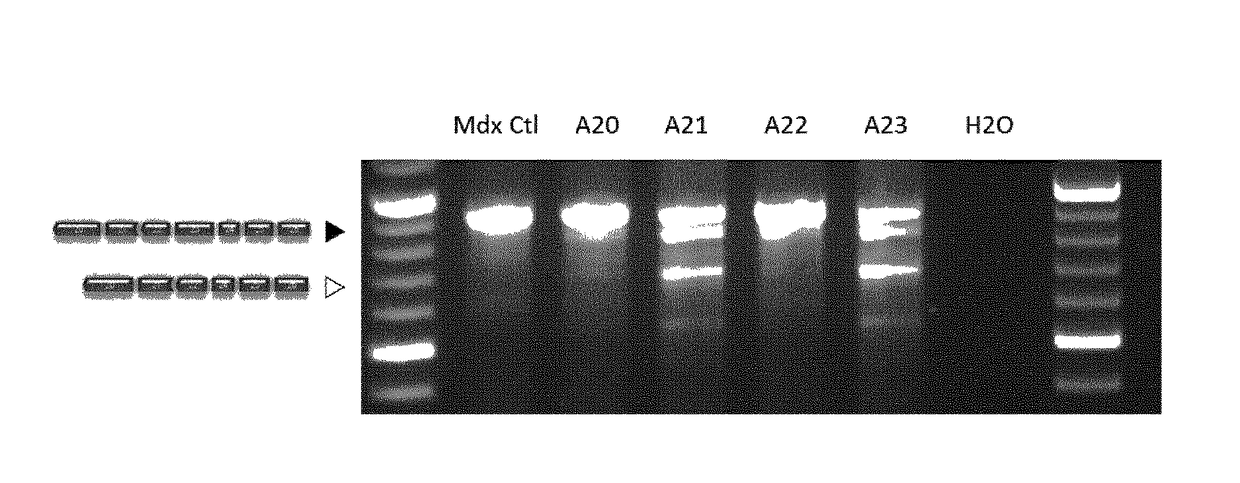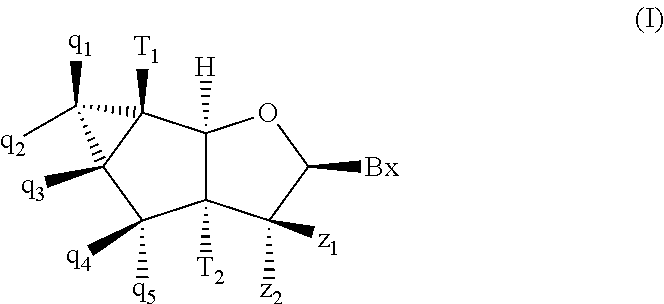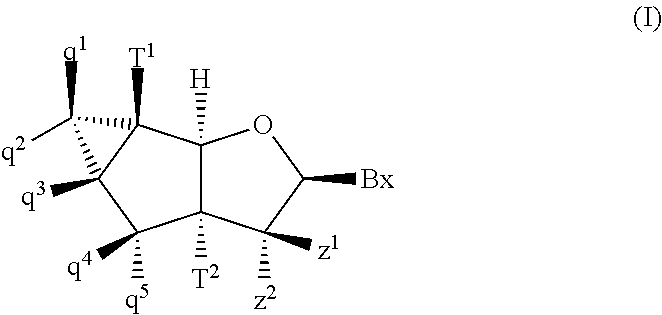Tricyclic nucleosides and oligomeric compounds prepared therefrom
a technology of oligomeric compounds and nucleosides, which is applied in the field of tricyclic nucleosides, can solve the problems of achieve the effects of enhancing properties such as nuclease stability, cell permeability, bioavailability or toxicity, and loss of normal function of the target rna
- Summary
- Abstract
- Description
- Claims
- Application Information
AI Technical Summary
Benefits of technology
Problems solved by technology
Method used
Image
Examples
example 1
Preparation of Compound 11 (Scheme 1)
[0120]Compound 1 is prepared according to published procedures by Steffens et al., Helvetica Chimica Acta, 1997, 80, 2426-2439. Bromination followed by bromine fluorine exchange gives compound 4 that is converted into the cyclopropane 5 with CH2I2 and diethylzinc. Compound 5 was then converted into enolether 6 which was subjected to NIS mediated nucleosidation affording after radical reduction nucleosides 8 in a highly stereoselective manner. Desilylation, tritylation and phosphitylation following standard procedures yielded the phosphoramidite 11 containing the nucleobase thymine that was subsequently used for oligonucleotide synthesis.
[0121]
example 2
Preparation of compound 18 (Scheme 2)
[0122]Compound 18 is prepared starting from compound 8 from Example 1. The base in 8 is converted in two steps via the triazolide 12 to the 5-methylcytosine containing nucleoside 13 which is then base protected by benzoylation leading to the two compounds 14 and 15, that deviate only by the presence or absence, resp., of the 3′ TMS group. Both 14 and 15 are then silyl-deprotected, tritylated and phosphitylated in analogy to Example 1, yielding the phosphoramidite 18.
[0123]
example 3
Preparation of Compound 31 (Scheme 3)
[0124]The known compound 19 is converted into the enol ether 20 by Lewis acid mediated elimination of the methoxy group. After desilylation (→21) and reprotection of the resulting hydroxy groups with acetic anhydride, compound 22 was obtained which upon fluorination with Selectfluor™ resulted in the two sugar building blocks with the fluoro substituent in either the ribo (23) or the arabino (24) configuration as roughly a 1:1 mixture. Compound 24 was then converted to the bromoacetal 26, via the acetoxy derivative 25. This was necessary as the acetate 25 was not reactive enough for nucleosidation. Bromoacetal 26 was treated with in situ persilylated thymine and resulted in nucleoside 27 that was obtained as an inseparable anomeric mixture in a α,β-ratio of 1:2.5. Removal of the protecting groups in 27 led to the free nucleosides 28 and 29 that could be separated by standard chromatography. The β-nucleoside 29 was further tritylated by standard me...
PUM
| Property | Measurement | Unit |
|---|---|---|
| time | aaaaa | aaaaa |
| temperature | aaaaa | aaaaa |
| temperature | aaaaa | aaaaa |
Abstract
Description
Claims
Application Information
 Login to View More
Login to View More - R&D
- Intellectual Property
- Life Sciences
- Materials
- Tech Scout
- Unparalleled Data Quality
- Higher Quality Content
- 60% Fewer Hallucinations
Browse by: Latest US Patents, China's latest patents, Technical Efficacy Thesaurus, Application Domain, Technology Topic, Popular Technical Reports.
© 2025 PatSnap. All rights reserved.Legal|Privacy policy|Modern Slavery Act Transparency Statement|Sitemap|About US| Contact US: help@patsnap.com



